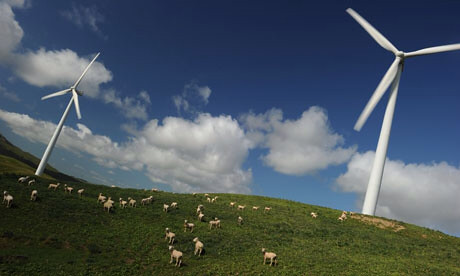With renewables we can contain consumption – and climate warming at 2C – if the big users act now.
The world's energy system is being pushed to breaking point, and our addiction to fossil fuels grows stronger each year. Many clean energy technologies are available, but they are not being deployed quickly enough to avert potentially disastrous consequences.
This is the message the International Energy Agency will deliver on Wednesday in London at the Clean Energy Ministerial, a meeting of ministers and representatives of nations that together account for four-fifths of world energy demand. In a new report we find that achieving a more secure, sustainable energy system, in line with the goal of limiting the rise in global temperatures to 2C, is still possible but requires urgent action by the world's major governments.
The present state of affairs is unacceptable precisely because we have a responsibility and a golden opportunity to act. Energy-related CO2 emissions are at historic highs; under current policies we estimate energy use and CO2 emissions will increase by a third by 2020, and almost double by 2050. This would probably send global temperatures at least 6C higher within this century.
It doesn't have to be this way. One need only look at the recent progress made by a portfolio of renewable technologies to see that rapid technological change is possible. In particular, the output from onshore wind power has grown by 27% annually over the past decade. Solar panels easily installed by households and businesses (known as solar PV) have grown 42% annually, albeit from a small base.
But other technologies with great potential for energy and emissions savings are making much less progress. Vehicle fuel-efficiency improvement is slow in many countries, and manufacturers' sales projections for electric vehicles after 2014 are a fraction of government targets. Carbon capture and storage is not seeing the rate of investment needed to develop full-scale demonstration projects. In addition, half of new electricity demand has been met by coal; and to make things more challenging, 50% of those new coal-fired power plants are still being built with inefficient technology. All these trends are going in the wrong direction. More


No comments:
Post a Comment